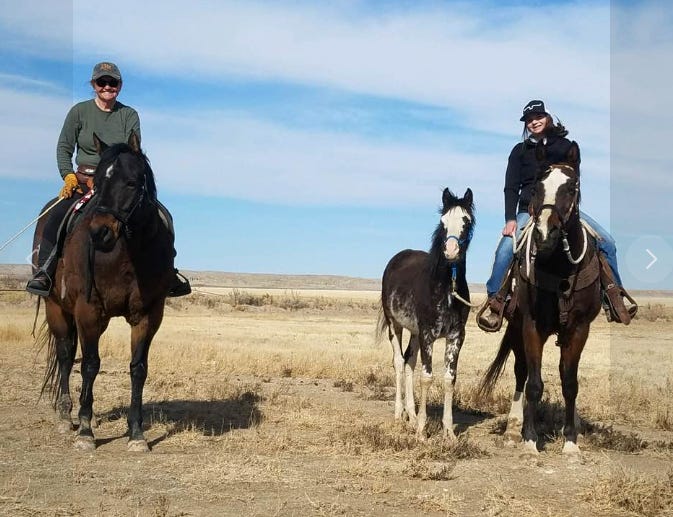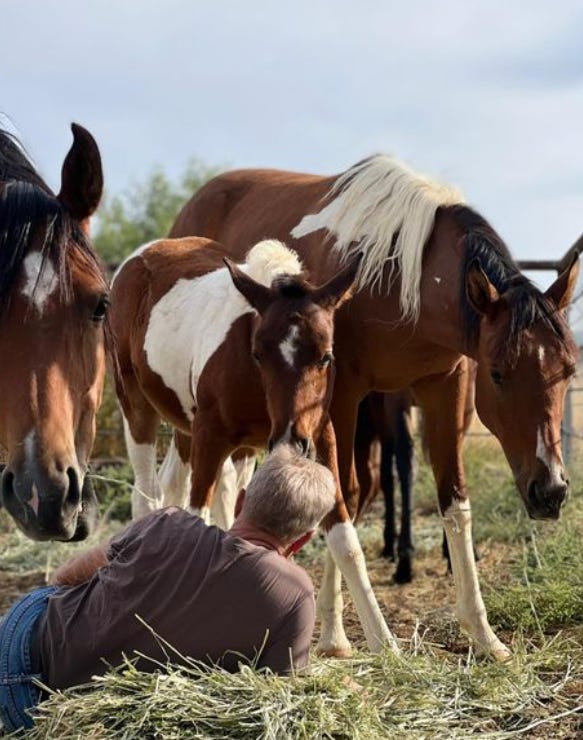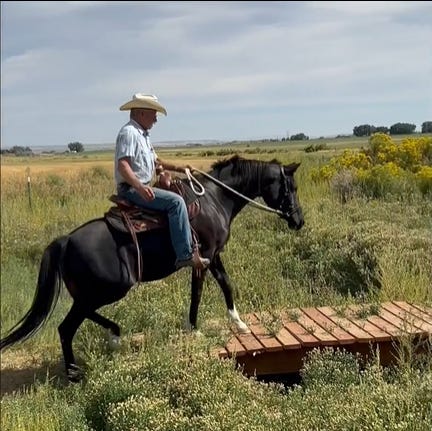Always Improving our Relationships: Finding the balance between dangerous and dull.
Relationship based horsemanship

This past winter, there was so much snow on the ground that I was unable to ride my horses.
As the snow melted, and I knew that I was going to be able to ride my horses again, a plan formed in my head about how I would approach them after six months of no riding.
One advantage I had was the time to improve the relationship that I have with each horse as I waited not-so-patiently, knowing the season for riding would come again.
My strategies to do this involved:
taking my time
seeing moments from my horses’ point of view
getting more attuned with my horses by watching their body language with greater discernment
writing down my goals for each day, trying not to let distractions get in my way
interacting appropriately with the horse that shows up
These strategies revolve around my own shortcomings. Strategies should be geared toward improving shortcomings.
Horses bond with one another rapidly. Until I can do that, I have a long way to go.
Some thoughts about relationships and taming
In the process of improving relationships, I must keep safety in mind, especially when taming young and/or inexperienced horses. If you read my post about safety, you’ll know that safety is in the back of my mind when I do anything with my horses, from opening a gate to riding out in open country.
For me, preparing to be safe is far more important than any helmet or rib protector that I could wear.
As breeders, we want to know that we’ve trained any horse who is leaving the farm in a way that mitigates the risks of interacting with that horse, just as we do for the horses who live permanently with us.
The goal is tameness. I’m working on the tameness of my horses almost continuously. The side effects of this effort are making me a better horseman and a better human, to name just two.
Definitions of tame:
1. changed by humans from a naturally wild state into a tractable, domesticated, or cultivated condition
2. (of animals) not fearful of human contact
Study the next two definitions of tame:
3. lacking in spirit or initiative; meek or submissive
4. flat, insipid, or uninspiring
The last thing I want to do is interact with an insipid horse. See my article about learned helplessness to understand more about how horses can be cowed into submission, leaving them dull and robotic.
The line between dangerous and dull revolves around our ability to have a relationship with any horse we touch, which goes back to my list of personal strategies outlined above. Even brief interactions with a horse give us opportunities to interact appropriately, or not. Reminding ourselves about how quickly horses bond with one another keeps me humble and observant.
If I see danger signs in a horse, I can act to mitigate those dangers. Sometimes, that means getting on the other side of a fence. Sometimes it just means moving a horse’s shoulder over, reminding them not to crowd you, even in subtle ways. What I don’t want to do is confirm their instincts that I’m a danger to them. Nor do I want to be the bottom herd member. That’s a road that can easily result in injury.
I don’t want to flood them with panic or fear until they just stand still out of learned helplessness. That is the trail to a lifeless, robotic horse, and a horse that at some point can explode out of raw fear.
Flooding can lead to anger and willfulness in highly dignified and/or intelligent horses. These can be some of the hardest lessons to undo because trust is lost and is not easily recovered. Walker, my 26-year-old Half-Arabian, who had no trust in humans when I first got him, taught me that lesson early and often.

It is my view that taming should start on the first day of a foal’s life. It’s critical horses learn how to live with humans, or it’s likely they will end up in a kill pen. People ask online often, why are there so many kill pen horses? I believe the lack of tameness is one very large contributing factor. In my view, the Parelli Program is still the best program that teaches people how to achieve tameness without dullness, if it’s followed correctly.
Tameness is the one area that is often neglected, and the lack of tameness in horses has resulted in untold injuries to horses and humans. On the HAAP farm, tameness while keeping the horse’s spirit and personality intact is front and center of our program of raising and training our horses.
For more information about the amazing horses that have been and are being bred on the HAAP farm, go to www.arabpinto.com
If you have questions for me about any of my posts, please feel free to contact me at isabellefarmer@gmail.com or visit our Facebook page at www.facebook.com/arabpintos




Very nice , I enjoy your articles. Not sure I’ve told you but growing up
I had a friend that basically owned a rescue horse from a bad situation. I remember how much time and love it took for the horse to ever trust again, and she reserved that trust to only a few of us. My friend did a great job helping the horse recover and become rideable. It helped me understand and respect their space and safety first. I always brought the horse a treat after awhile I’d change pockets to see if she’d figure it out . It got to be a game . Flame would frisk me until she figured out the pocket sniff one pocket or the other then when she found it pretty much tell me with body language hey I found it give it up. 😊